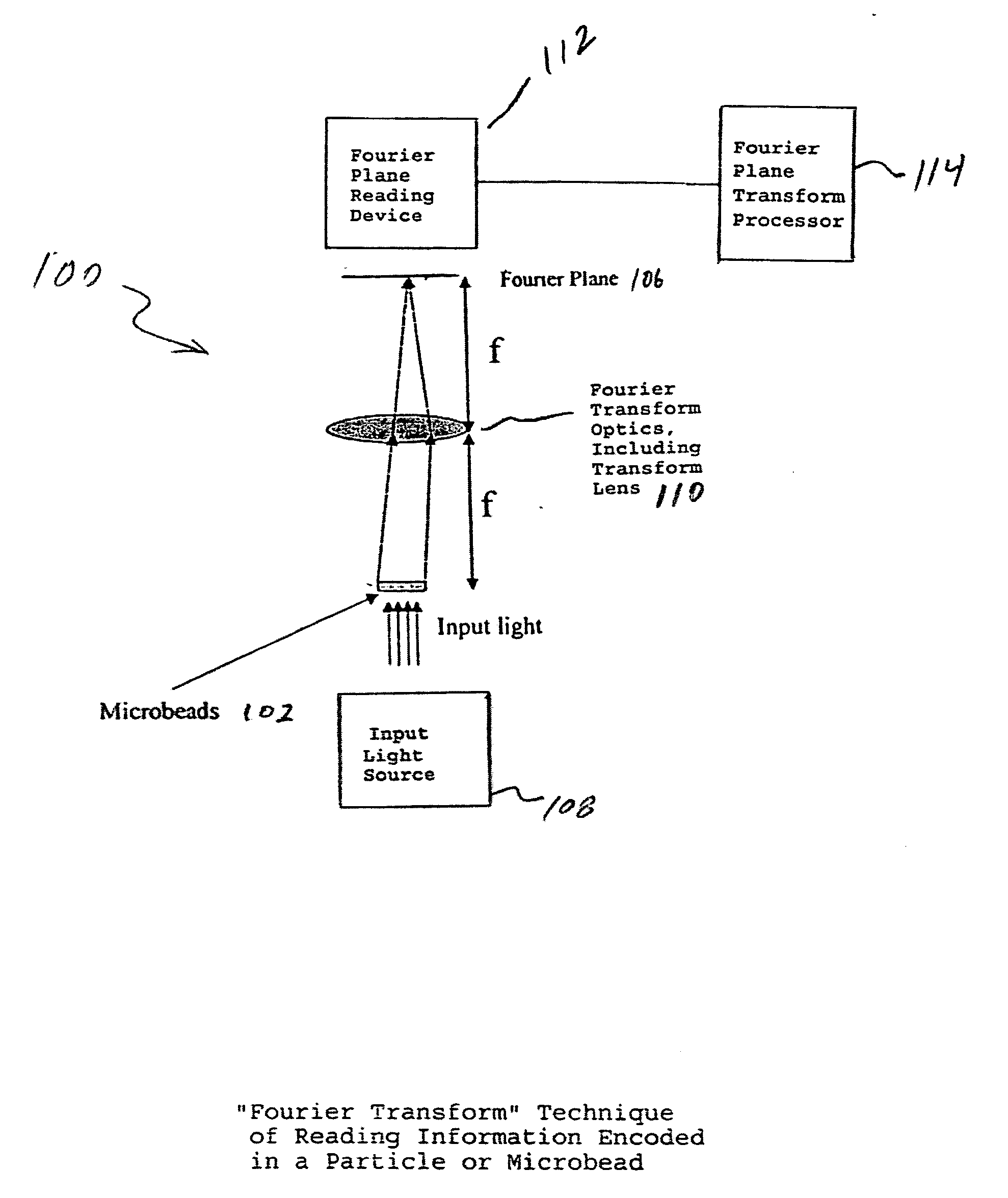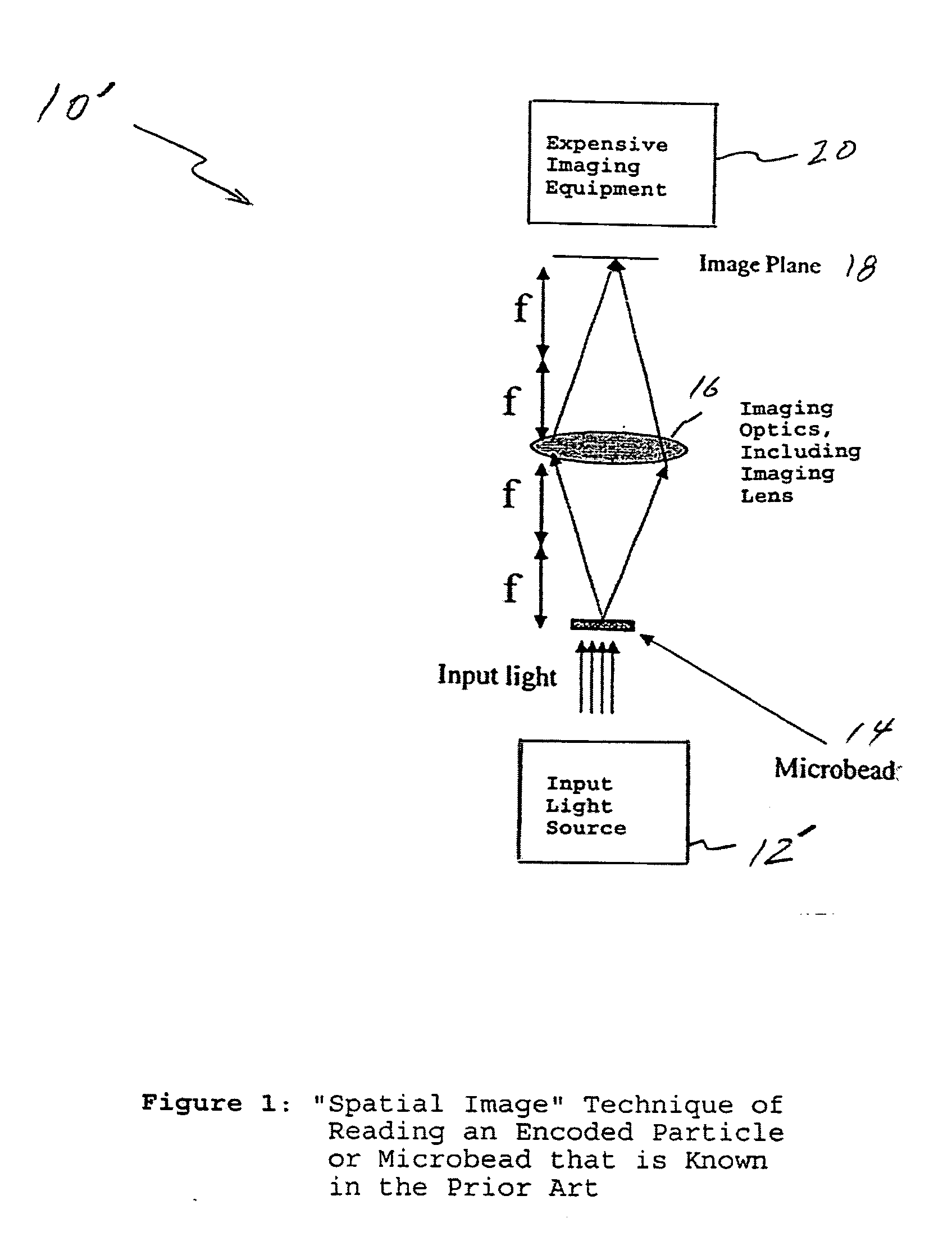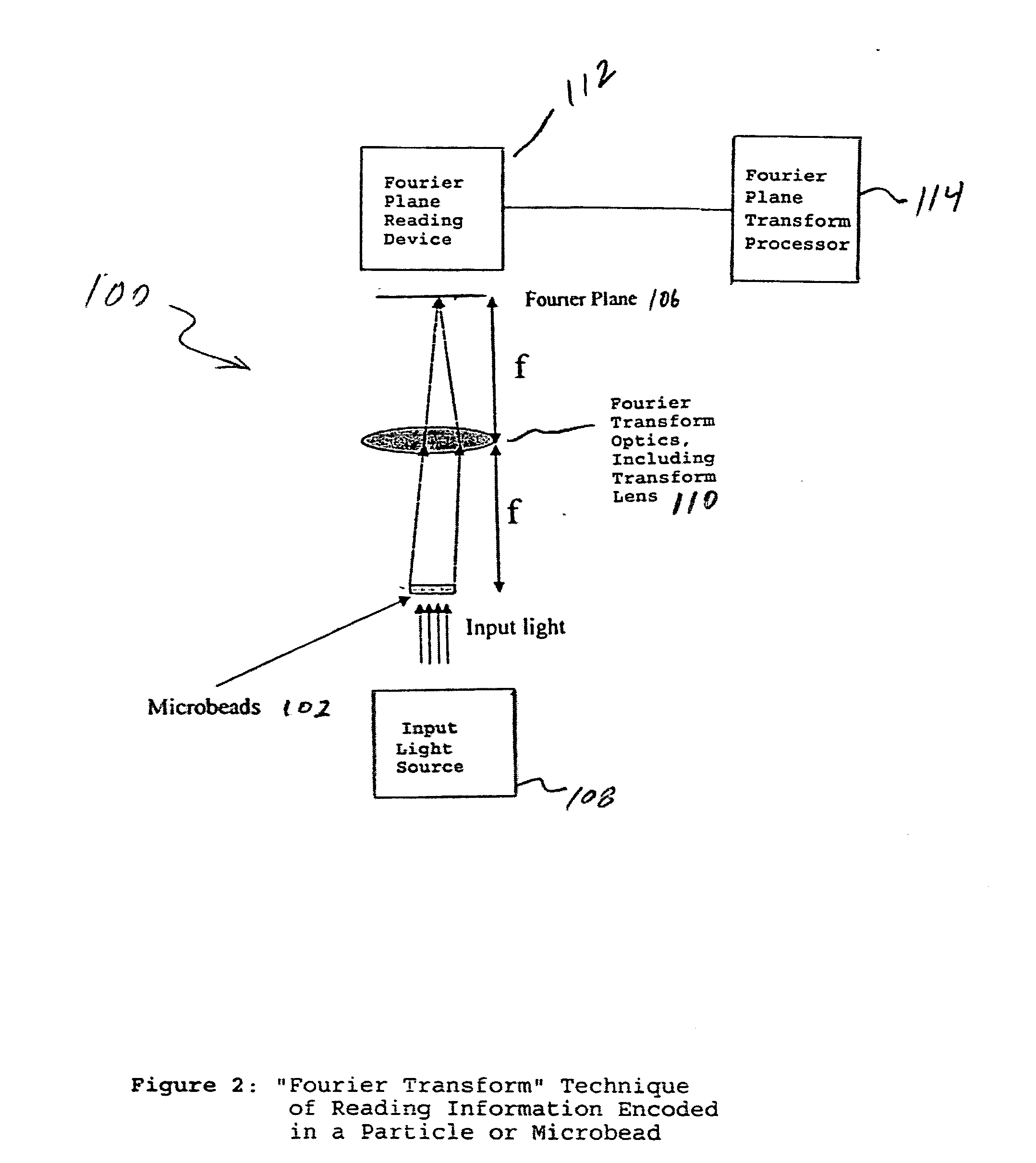Fourier scattering methods for encoding microbeads and methods and apparatus for reading the same
a fourier scattering and microbead technology, applied in the field of fourier scattering methods for encoding microbeads, can solve the problems of high resolution, high resolution, optical techniques, and high cost of providing high resolution images, and achieve the effect of high resolution magnified images
- Summary
- Abstract
- Description
- Claims
- Application Information
AI Technical Summary
Benefits of technology
Problems solved by technology
Method used
Image
Examples
Embodiment Construction
[0025]FIG. 2 shows an optical arrangement using a Fourier transform technique generally indicated as 100 for reading a microbead or other suitable optical element generally indicated 102 having a code 104 (See, for example, FIG. 3) written thereon, wherein the code 104 is projected on and read from a Fourier plane 106.
[0026] In operation, the code 104 is projected on the Fourier plane 106 by passing input light from an input light source 108 through the microbead 102 and an optical arrangement having a transform lens 110 for focusing the code 104 on the Fourier plane 106, and read on the Fourier plane 106 with a Fourier plane reading device 112, including a charge coupled device (CCD) or other suitable Fourier plane reading device and a processor for performing Fourier plane analysis. The transform lens 110 is arranged between the microbead 102 and the Fourier plane 106 at a distance of about one focal length f from each, while the charge coupled device (CCD) or other suitable Four...
PUM
 Login to View More
Login to View More Abstract
Description
Claims
Application Information
 Login to View More
Login to View More - R&D
- Intellectual Property
- Life Sciences
- Materials
- Tech Scout
- Unparalleled Data Quality
- Higher Quality Content
- 60% Fewer Hallucinations
Browse by: Latest US Patents, China's latest patents, Technical Efficacy Thesaurus, Application Domain, Technology Topic, Popular Technical Reports.
© 2025 PatSnap. All rights reserved.Legal|Privacy policy|Modern Slavery Act Transparency Statement|Sitemap|About US| Contact US: help@patsnap.com



